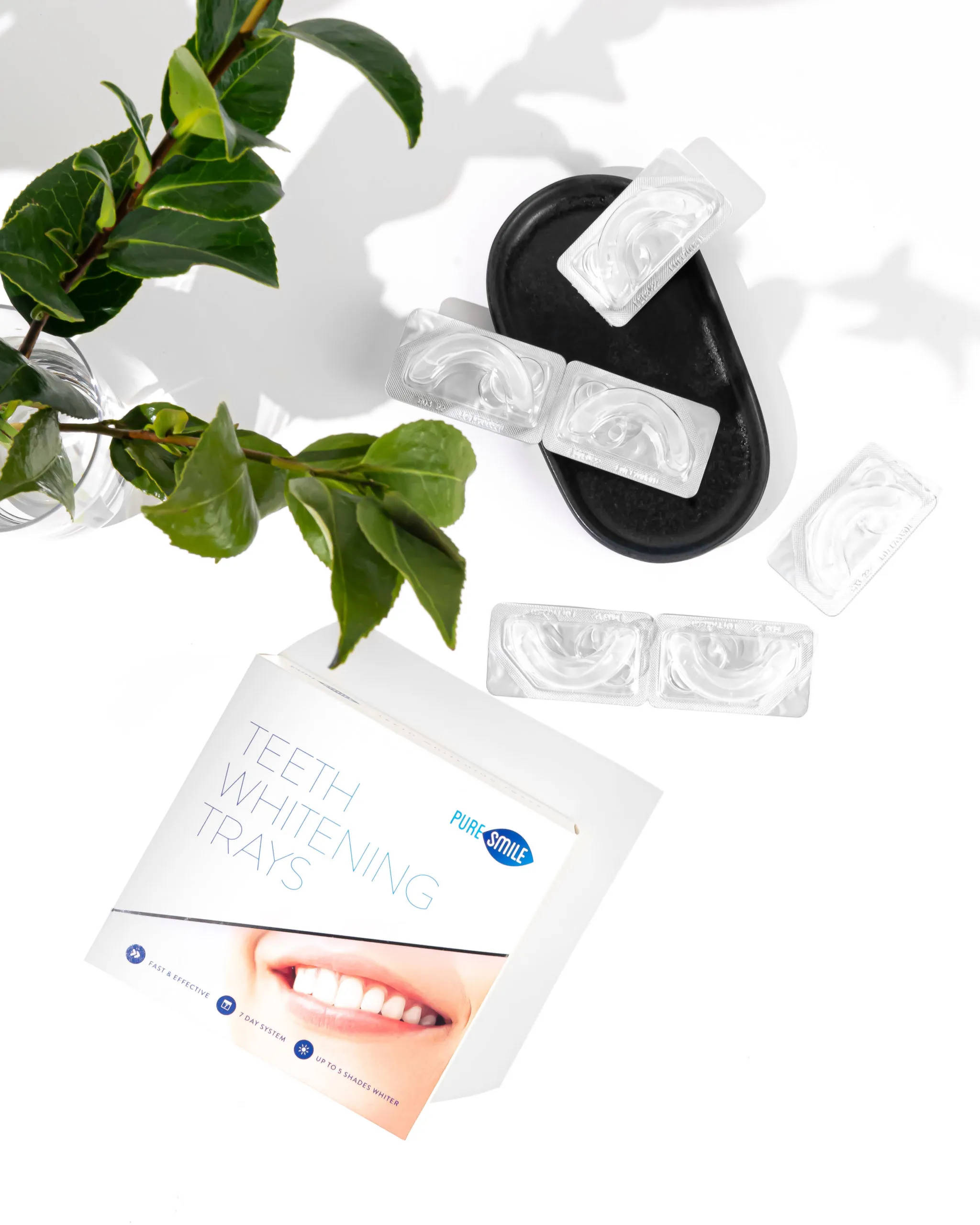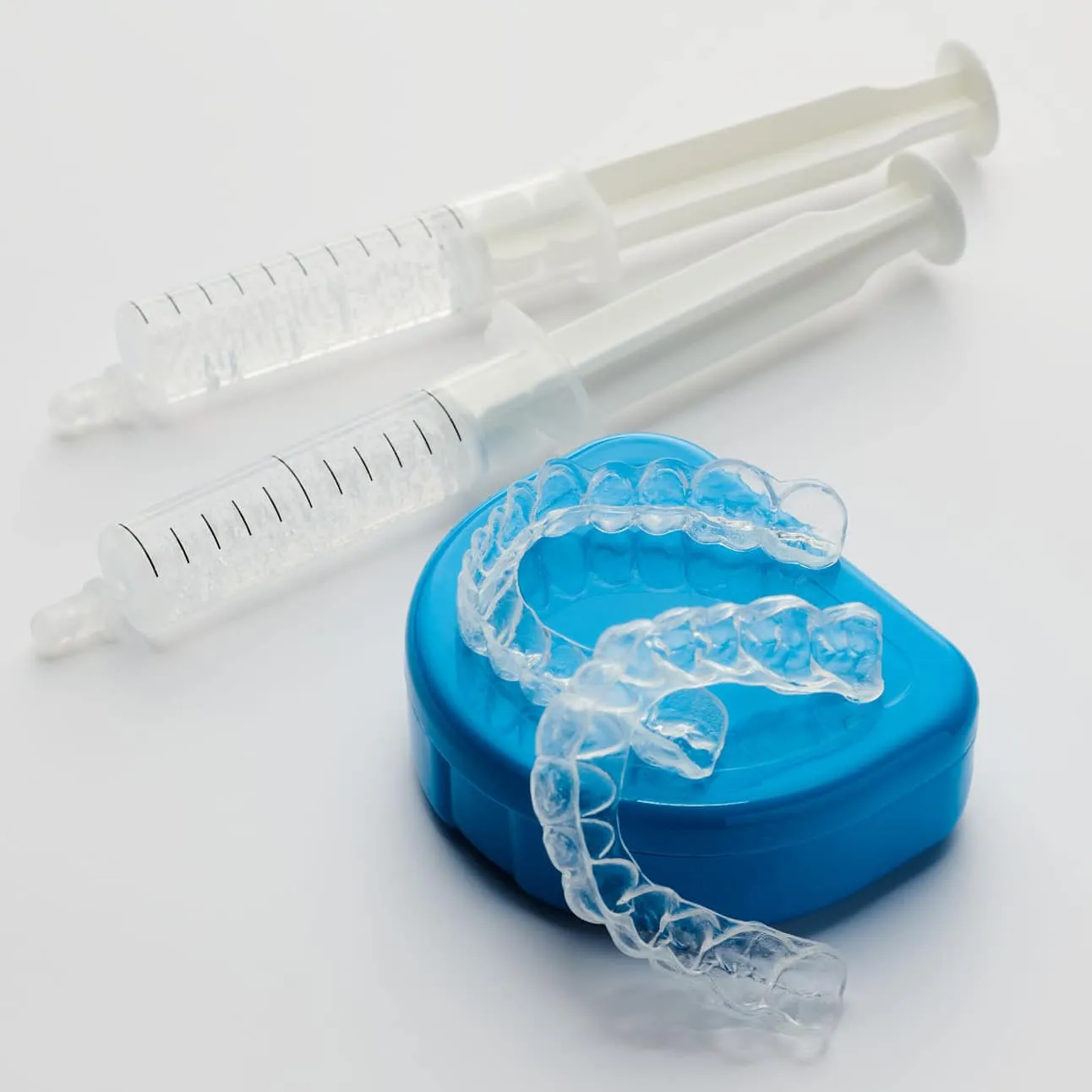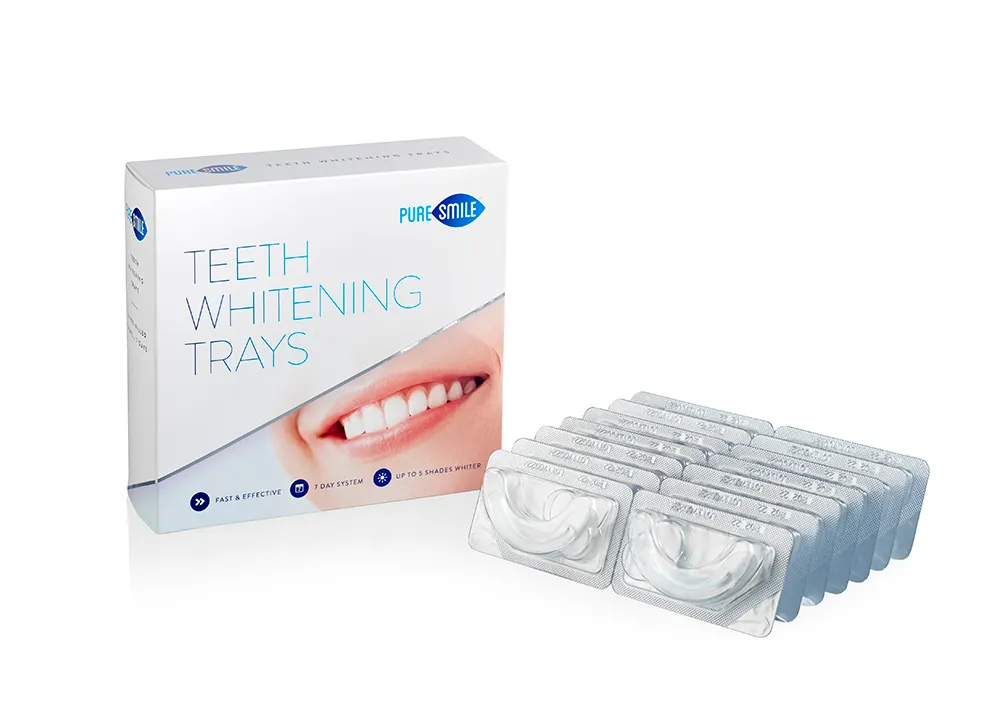Teeth whitening trays are a popular method for achieving a brighter smile, but it’s crucial to understand the proper usage to ensure safety and effectiveness. While these trays can be highly effective, using them incorrectly, particularly by sleeping with them in, can lead to several potential issues. This guide will explore the top 5 safety facts about teeth whitening trays, focusing on why you shouldn’t sleep with them, how they work, and the best practices for safe and effective use. Understanding these facts will help you achieve a dazzling smile while protecting your oral health. Let’s delve into the details to ensure you’re using teeth whitening trays safely.
Teeth Whitening Trays Why You Shouldn’t Sleep with Them
Sleeping with teeth whitening trays significantly increases the risk of several adverse effects. The extended exposure time to the whitening agent, typically hydrogen peroxide or carbamide peroxide, can exacerbate potential problems. Throughout the night, the saliva flow decreases, which naturally helps to dilute and neutralize the whitening agent. Without this natural dilution process, the concentration of the agent remains high, increasing the likelihood of gum irritation, tooth sensitivity, and other complications. It’s essential to adhere to the recommended usage time specified by your dentist or the product instructions to minimize these risks and safeguard your oral health.
Potential Risks of Sleeping with Trays
Gum Irritation and Sensitivity

One of the most common risks associated with sleeping with teeth whitening trays is gum irritation. The whitening agent, if left in contact with the gums for an extended period, can cause inflammation, redness, and even blistering. This occurs because the concentrated peroxide solution can irritate the delicate gum tissues. Sensitivity in the teeth can also increase, making it painful to consume hot or cold foods and beverages. This heightened sensitivity results from the whitening agent penetrating the enamel and affecting the nerves within the teeth. Proper use and adherence to the recommended usage time can mitigate these issues, ensuring a comfortable and safe whitening experience.
Tooth Enamel Damage
Prolonged exposure to whitening agents can potentially weaken and damage the tooth enamel. Enamel is the protective outer layer of your teeth, and it can be affected by the chemicals in the whitening solution. Overuse can lead to demineralization, where the enamel loses essential minerals, making your teeth more susceptible to damage. This can result in increased sensitivity and a higher risk of cavities. To protect your enamel, it’s crucial to follow the instructions for usage and avoid exceeding the recommended treatment duration. Regular dental check-ups can also help monitor the health of your enamel.
Increased Risk of Tooth Decay
Sleeping with whitening trays can elevate the risk of tooth decay. The whitening agents, particularly when used overnight, can disrupt the natural balance of bacteria in the mouth. This can lead to an increase in harmful bacteria, which contribute to the formation of plaque and the development of cavities. Moreover, if the trays don’t fit properly, the whitening gel can leak and come into contact with the teeth and gums unevenly, increasing the risk of decay in certain areas. Maintaining excellent oral hygiene, including regular brushing, flossing, and dental check-ups, is crucial to counteract this risk.
How Teeth Whitening Trays Work

Teeth whitening trays are designed to deliver a whitening agent, usually hydrogen peroxide or carbamide peroxide, to the surface of the teeth. The trays are custom-fitted to your teeth, ensuring that the whitening gel makes even contact with the enamel. The whitening agent penetrates the enamel and breaks down the stains and discolouration that have accumulated over time. This process results in a brighter and more appealing smile. The effectiveness of the whitening process depends on the concentration of the active ingredient, the duration of use, and the frequency of treatment. Understanding how these trays work is crucial for achieving optimal results while minimizing potential risks.
The Role of Whitening Agents
The primary whitening agents used in teeth whitening trays are hydrogen peroxide and carbamide peroxide. These chemicals work by oxidizing the stain molecules within the tooth enamel, breaking them down and making them less visible. Hydrogen peroxide is the active ingredient, while carbamide peroxide breaks down into hydrogen peroxide when it comes into contact with water. The concentration of the whitening agent varies depending on the product and the intended use. Higher concentrations often lead to faster results, but they also increase the risk of sensitivity and irritation. Therefore, it’s important to choose a product and usage plan that aligns with your dentist’s recommendations and your sensitivity levels.
Hydrogen Peroxide and Carbamide Peroxide
Both hydrogen peroxide and carbamide peroxide are effective whitening agents, though they differ slightly in their action. Hydrogen peroxide is a more direct and potent bleaching agent, often used in professional treatments. Carbamide peroxide breaks down into hydrogen peroxide over time, making it suitable for at-home treatments. The choice between the two depends on the desired whitening speed, sensitivity levels, and the specific product. The concentration of each agent is a crucial factor in determining the effectiveness and safety of the whitening process. It is also important to follow the instructions provided with the product or by your dentist for the best results.
The Importance of Tray Fit and Usage

The fit and proper usage of teeth whitening trays are critical factors in achieving safe and effective results. Ill-fitting trays can lead to uneven whitening, gum irritation, and the potential for the whitening agent to leak and cause damage. Custom-fitted trays, often provided by a dentist, offer the best fit and ensure that the whitening gel is evenly distributed across the teeth. When using trays, it’s crucial to follow the instructions carefully, including the recommended duration of use and frequency. Incorrect usage can undermine the effectiveness of the whitening process and increase the risk of side effects. Regular dental check-ups are also recommended to ensure the trays fit properly and to monitor oral health.
Proper Tray Fit and Application
Proper tray fit is essential for safe and effective teeth whitening. Custom-fitted trays, made by a dentist, are designed to snugly fit your teeth, preventing the whitening gel from leaking onto your gums. Before applying the gel, ensure your teeth are clean and dry. Apply a small amount of the whitening gel into the tray, as excessive amounts can lead to spillage and irritation. Insert the tray into your mouth and gently press it against your teeth to ensure a comfortable fit. Follow the recommended usage time, usually between 30 minutes to a few hours, as directed by your dentist or product instructions. After removing the tray, rinse your mouth with water to remove any remaining gel.
Best Practices for Teeth Whitening
To maximize the effectiveness and safety of teeth whitening, several best practices should be followed. This includes consulting with a dentist before starting any whitening treatment. A dentist can assess your oral health, recommend the most suitable whitening method, and provide custom-fitted trays if needed. Following the dentist’s instructions is paramount, which includes adhering to the recommended usage time, frequency, and any specific guidelines for your particular situation. Maintaining excellent oral hygiene is also critical, including regular brushing, flossing, and dental check-ups, both during and after the whitening process. These practices will contribute to a brighter smile and long-term oral health.
Following Dentist Instructions

Always follow your dentist’s instructions precisely when using teeth whitening trays. Your dentist will assess your oral health and recommend a treatment plan that is tailored to your specific needs. This includes the concentration of the whitening agent, the duration of each treatment session, and the frequency with which you should use the trays. Adhering to these instructions is crucial for achieving the desired results while minimizing the risk of side effects. If you have any questions or concerns, consult your dentist for clarification and guidance. They can also monitor your progress and make any necessary adjustments to your treatment plan.
Recommended Usage Time
The recommended usage time for teeth whitening trays varies depending on the concentration of the whitening agent and the specific product. Typically, at-home trays are designed to be used for short periods, often between 30 minutes and a few hours per session. Sleeping with trays, as previously noted, drastically extends this exposure time, increasing the risk of adverse effects. Always check the product instructions or your dentist’s recommendations for the proper usage time. Consistency is key, but never exceed the recommended duration. If you experience any sensitivity or discomfort, discontinue use and consult your dentist.
Maintaining Oral Hygiene
Maintaining excellent oral hygiene is vital for both the effectiveness and safety of teeth whitening. Brushing your teeth twice a day with fluoride toothpaste is essential to remove plaque and food particles. Flossing daily helps to remove debris from between your teeth, which brushing cannot reach. Regular dental check-ups and professional cleanings are also crucial for maintaining optimal oral health. During teeth whitening treatments, continue with your regular oral hygiene routine and consider using a desensitizing toothpaste if you experience any sensitivity. Good oral hygiene ensures that the whitening process is as effective as possible while minimizing any potential risks. Always brush your teeth after using the tray.
Alternatives to Overnight Whitening

If you are seeking a brighter smile but want to avoid the risks associated with overnight whitening, several alternative options are available. These alternatives offer effective results while minimizing the potential for adverse effects. Daytime whitening options, professional whitening treatments, and other approaches are all worth considering. Discussing these options with your dentist can help you find the best solution for your specific needs and preferences. Understanding the benefits and drawbacks of each alternative will empower you to make an informed decision that will lead to a brighter and healthier smile.
Daytime Whitening Options
Daytime whitening options offer a safer alternative to overnight teeth whitening. Many over-the-counter whitening products, such as strips and gels, are designed for short-term use during the day. These products typically contain lower concentrations of whitening agents, reducing the risk of sensitivity and gum irritation. You can also explore the option of custom trays with lower-concentration formulas, which are designed for use during the day and can be worn for short periods. Daytime whitening is often a convenient choice for those who want to brighten their smile without sleeping with the trays. Always follow the instructions and consult with your dentist to find the safest and most effective option for your needs.
Professional Whitening Treatments
Professional teeth whitening treatments, performed by a dentist, offer the most controlled and often most effective results. These treatments typically involve higher concentrations of whitening agents and are applied under careful supervision, minimizing the risks of side effects. In-office treatments often use light or laser activation to enhance the whitening process. Dentists can also provide custom-fitted trays and professional-grade whitening gels for at-home use, with specific instructions and monitoring. While professional treatments may be more expensive, they provide a safe and efficient way to achieve a dramatically brighter smile. Consider this option for the best possible results and guidance.
Safety Measures and Precautions

When using teeth whitening trays, several safety measures and precautions must be taken to protect your oral health. Always consult with a dentist before starting any whitening treatment. Discuss your medical history, current oral health conditions, and any concerns you may have. Follow the product instructions and your dentist’s recommendations precisely. Never exceed the recommended usage time or the concentration of the whitening agent. If you experience any sensitivity, gum irritation, or other unusual symptoms, discontinue use and consult your dentist immediately. Regular dental check-ups are also essential to monitor your oral health and ensure that your teeth whitening treatment is safe and effective. Prioritizing these measures will help you achieve a brighter smile while maintaining a healthy mouth.
In conclusion, while teeth whitening trays can be a valuable tool for enhancing your smile, it is crucial to prioritize safety and adhere to the best practices. Avoiding sleeping with the trays is of paramount importance due to the increased risk of gum irritation, enamel damage, and tooth decay. By understanding how these trays work, following your dentist’s instructions, and exploring alternative options like daytime treatments or professional whitening, you can achieve a brighter smile while protecting your oral health. Remember to always consult with a dental professional for personalized guidance and to address any concerns you may have. Prioritizing your oral health is key to enjoying a beautiful, healthy smile for years to come.
